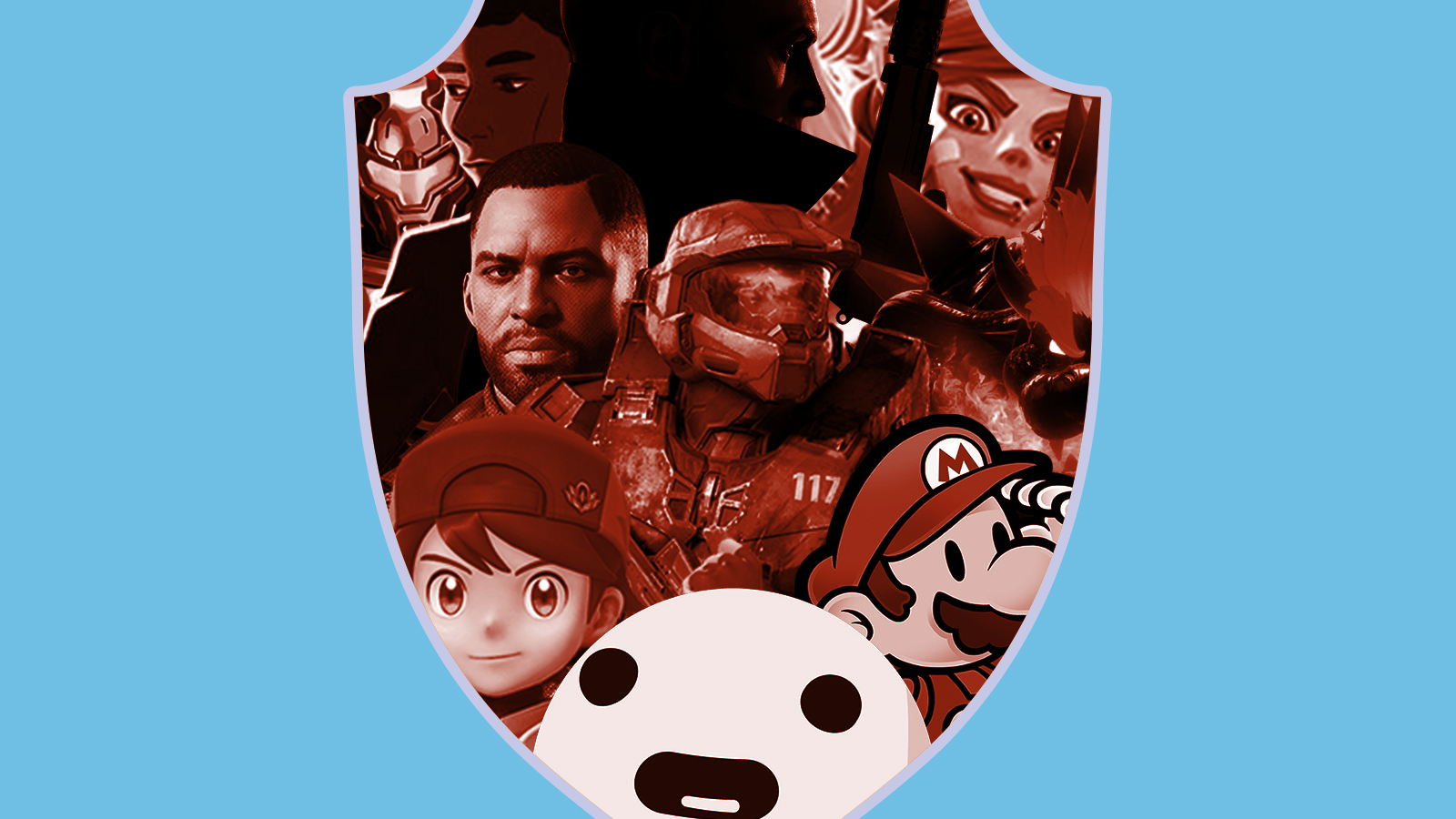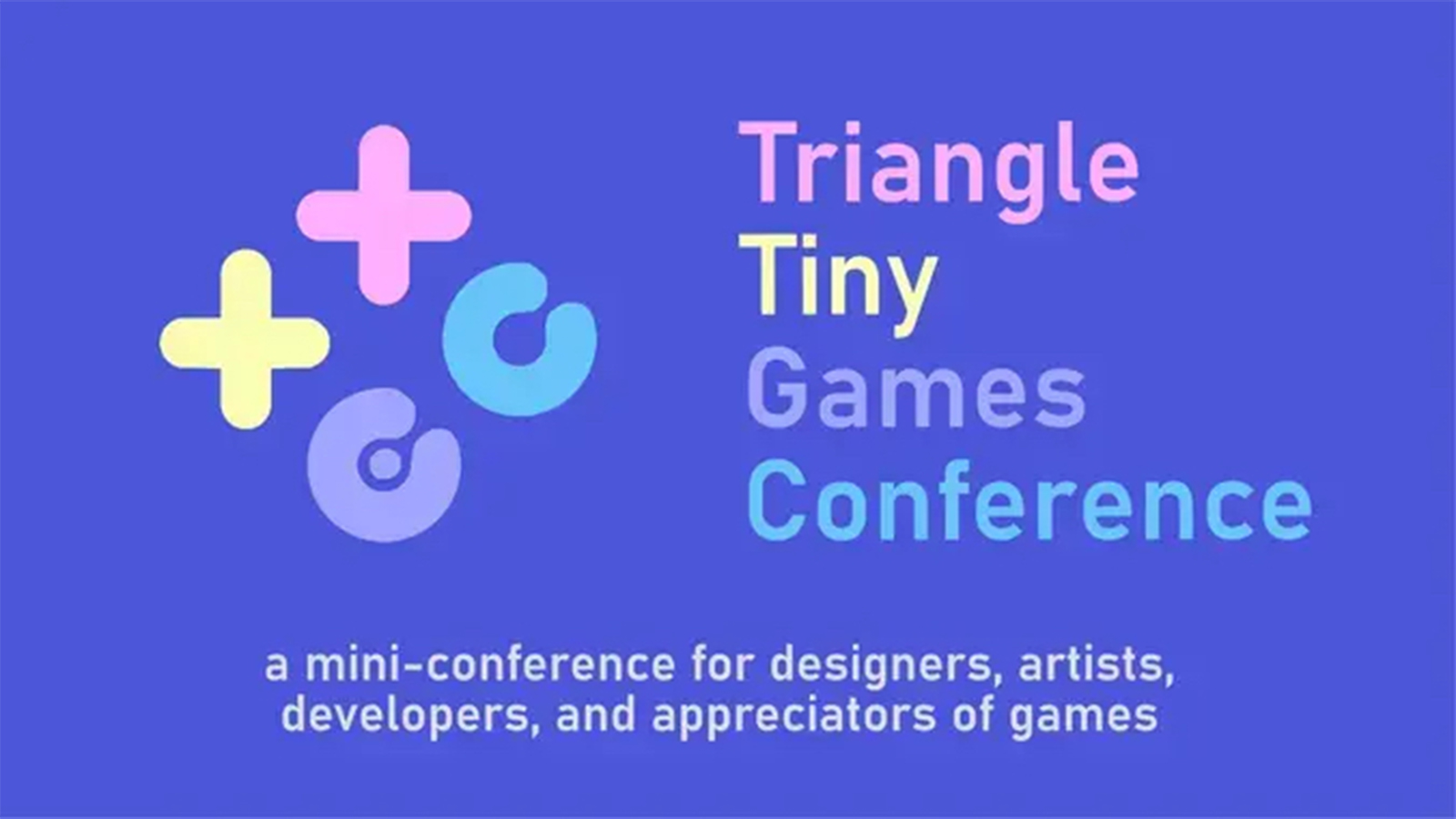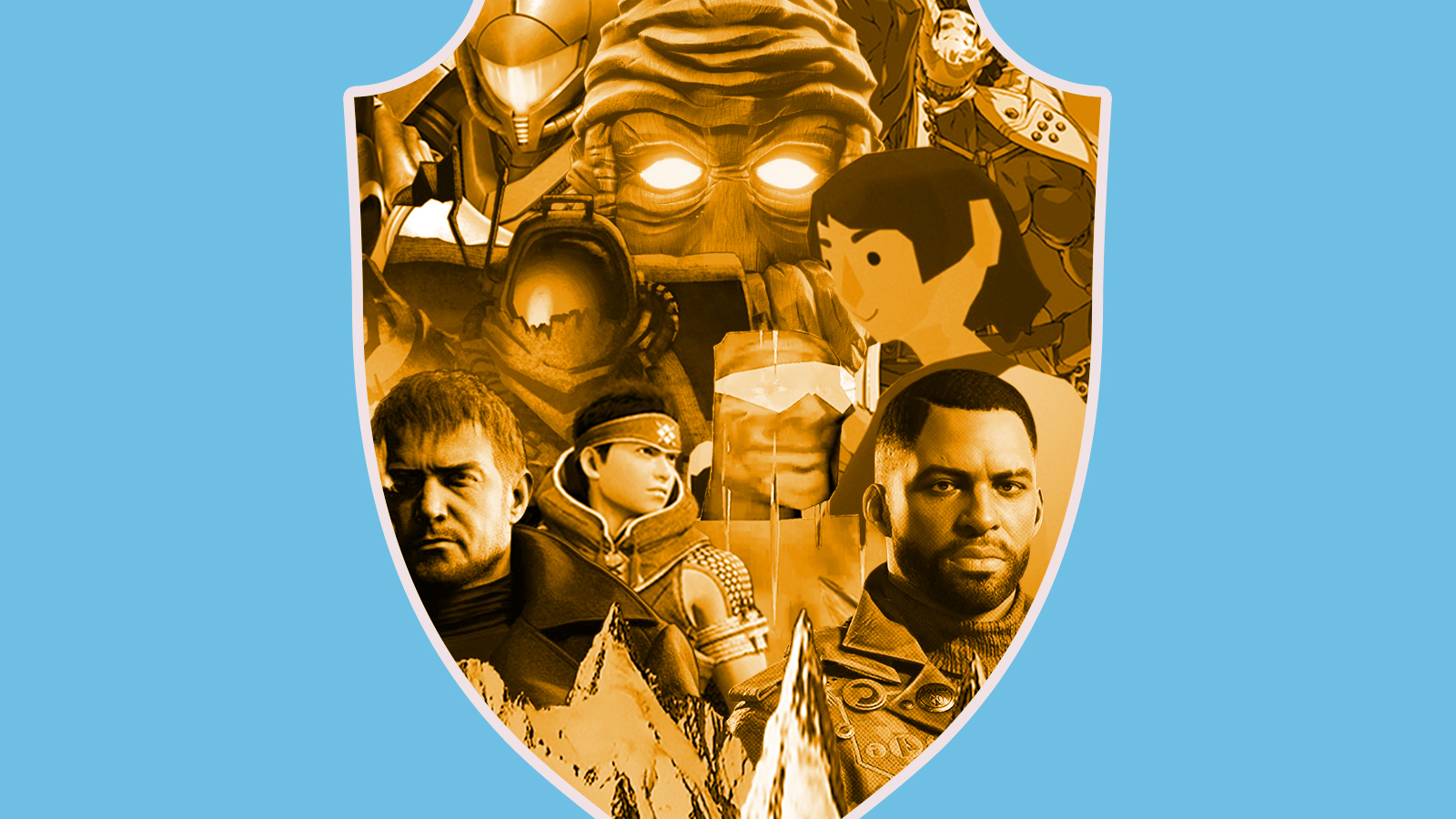ideo games! They’re back! Or were they always here?
It’s hard to tell. With less podcasting this past year, I didn’t have a way to easily chart and remember all the games I played. Compound that with the fact that a good portion of my free time was spent making games as opposed to playing games — which, as I’ve come to understand from my game development colleagues, is an all too common occurrence — and finding the games to build this list was a touch more difficult than previous years.
But! I still managed to pick out some I enjoyed; I just hope I haven’t overlooked any.
11
Pac-Man 99
Winner, winner, Pac-Dot dinner.
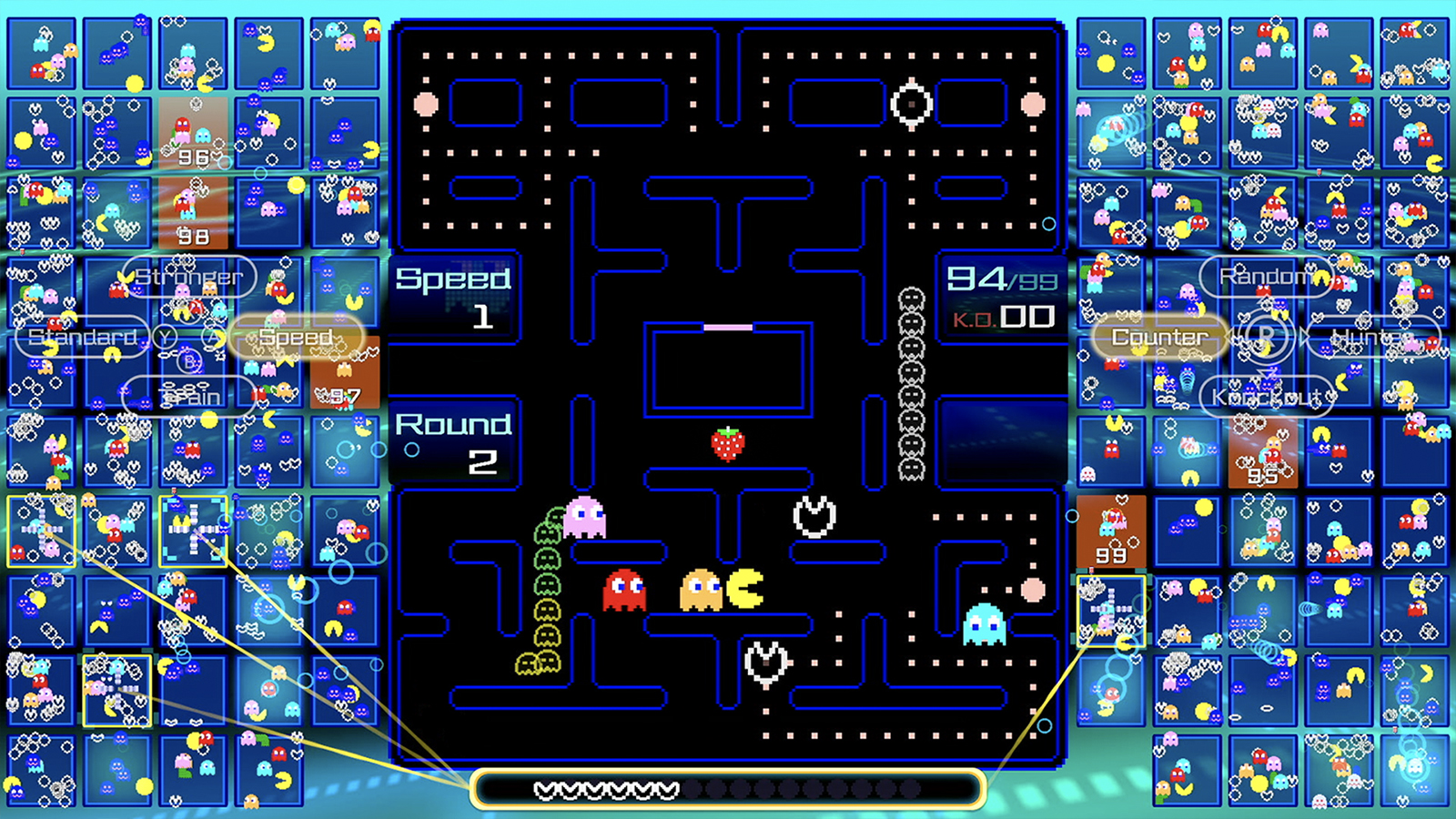
But turns out I did overlook one! I thought I had my top ten locked in, but I completely forgot about one game I played and really enjoyed. You might argue, “well, you must’ve not liked it that much if you forgot about it.” To which I say, “screw you, it was a long year.”
Unfortunately, that means I have to knock Pac-Man 99 down a peg, making it no longer a part of my top ten. However, it’s still a game I had a lot of fun with, so permit me this small indulgence to talk about my eleventh favorite game of the year.
Pac-Man 99 is the latest in the line of battle royale-like 99ers and 35ers that Nintendo has been releasing as value-added bonuses for their Nintendo Switch Online service, with Tetris 99 and Super Mario Bros. 35 being the previous entries in this ad-hoc series. And I gotta be honest: I didn’t really enjoy either of them.
Tetris 99 is a stressfully competitive affair, probably due to the fact that the world of PvP Tetris is well-established, making that game fertile ground for these pros to flaunt their skills, while making short work of a casual player like me.
Meanwhile, Super Mario Bros. 35 is a poor imitation of the vastly superior fan-made Mario Royale — which, as you may or may not know, I was a huge fan of — where the player count has been paired down and the only interaction you have with your opponents are via spawning enemies that you and the other players throw at each other. However, the enemy spawns ramp up in difficulty far too quickly — going from tossing a few Goombas to half a dozen Bowsers at you in just a few minutes.
So after two less than stellar experiences with Switch-based battle royales, I was incredulous that Pac-Man 99 would do the trick, but I’m happy to report that Namco’s prodigal son fits the genre perfectly.
The format of Pac-Man 99 starts out similarly to its battle royale predecessors: your traditional Pac-Man screen is surrounded on both sides by 98 other players, and while you’re playing in your own maze, actions you take affect the other ones. Every time a player eats a ghost — which is still done by turning them blue with Power Pellets — you ”attack” other players by spawning a ghostly Pac-Man on their board.
Namco’s prodigal son fits the [battle royale] genre perfectly.
These ethereal Pac-Men home in on you — moving faster than the regular ghosts — and slow you down when they collide, making you easy prey for your other spectral enemies. The only way to clear them off the board is to eat a Power Pellet, dissipating them instantly, but remember: you only have a max of four pellets at any given time, so you have to be strategic about when to utilize them to maximize the amount of ghosts eaten and ghostly Pac-Men destroyed.
Also new to this version of Pac-Man is two columns of tiny “sleeping ghosts” that, when eaten, add themselves to the end of one of the four core ghosts, allowing you to grab a Power Pellet and chomp on a giant conga line of blue hosts, spawning even more enemy Pac-Men on an opponent’s board. And if you or your opponents eat enough ghosts quickly — or if the player count has dwindled to the final few — there’s a chance of red ghostly Pac-Men spawning, which move slower than Inky, Blinky, Pinky, and Clyde, but can instantly kill you when touched.
Fortunately, every time you eat a certain amount of regular Pac-Dots, a bonus fruit appears, which you can eat to kill the red Pac-Ghosts as well as regenerate Pac-Dots, sleeping ghosts, and Power Pellets, allowing you to continue your assault against other players.
To me, doing this dizzying dance of dashing around the maze to go from eating ghosts to eating other ghosts to eating fruit to eating Power Pellets is a perfect balance of frenzy, strategy, and skill. So while I didn’t find footing with Tetris 99 or Super Mario Bros. 35, I’m glad Nintendo continues to put out these battle royale twists on classic games, cause there’s no telling when I’ll find one that sticks.
10
Super Mario 3D World + Bowser’s Fury
Fire Breath of the Wild.
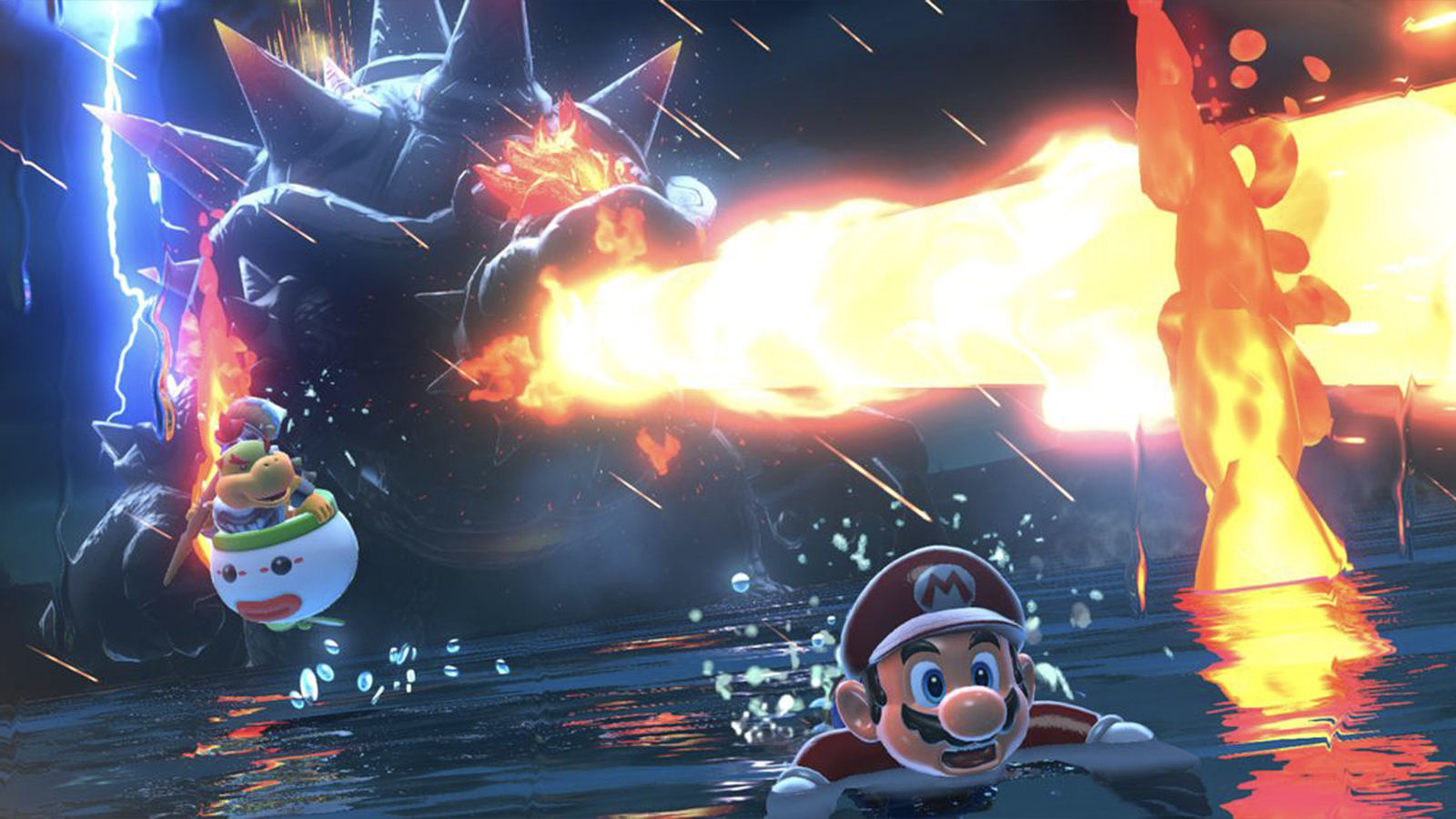
Can you feel it? We’re four years out from the release of Breath of the Wild, putting us right on the cusp of seeing a whole wave of game design inspired by Zelda’s new lease on life. We’re seeing Breath of the Wild’s specific take on the open world format adapted to all sorts of games: from Immortals: Fenix Rising to Halo Infinite to Sable to Kirby and the Forgotten Land to Sonic Frontiers. The floodgates are opening, and Super Mario 3D + Bowser’s Fury is but a trickle of things to come.
First, let’s address the first half of this game’s title: yes, it’s just 3D World again, which, in the grand pantheon of 3D Mario games, is probably the worst one, but when compared to the rest of video gamedom, makes it still pretty darn good. Heck, I replayed all of 3D World when I rebought this Mario twofer, and I may just yet try to 100% it.
Bowser’s Fury, however, is a completely new experience. In this adventure, Mario finds himself transported to Lake Lapcat, a tropical archipelago located on the other side of a portal of muck (written in the Shadow Mario “M” graffiti from Super Mario Sunshine, interestingly enough). There, he is confronted by Fury Bowser, a gigantic version of his classic rival, with dark blue skin and glowing, fiery eyes. After dodging his kaiju-sized attacks and collecting the first of many “Cat Shines,” Mario sends Fury Bowser retreating beneath the sea of goop in the middle of the map. Moments later, you come upon the plucky and mischievous Bowser Jr., equipped with his trusty magic brush from Sunshine. He seems just as surprised at his father’s current state, and, in a fit of desperation, begs Mario for his help. This leads Mario and Bowser Jr. on a trip across Lake Lapcat to collect as many Cat Shines as they can and try to return Bowser to his regular koopa kingly self.
The game’s staying power comes from a new take on what an open world Mario game could be, all the while combining parts from across the plumber’s legacy.
This is where the Breath of the Wild influence then reveals itself. Where a game like Super Mario Odyssey could reasonably be described as “open world” in one sense — where you load into one of several large, bustling kingdoms that you have to search hither and thither to find all the secrets within — Bowser’s Fury is “open world” in another sense — the entire game is played across this archipelago; there’s no loading in or out. To use the normal Mario parlance, the individual islands in Bowser’s Fury are equivalent to “worlds,” with each island housing multiple different “courses.” However, all the courses aren’t readily apparent from the get go; upon the completion of any individual course, the island you’re currently on transforms slightly to accommodate the next course. Sometimes new enemies or items will appear; other times, the physical landscape will change.
This allows you to tackle the islands in any order — out of the islands you’ve already unlocked, at least. You could grab a Shine from the first island and then jump on the back of everyone’s favorite Triassic water taxi, Plessie, complete a timed challenge over the water for another Shine, and end up on the other side of the map to complete a course over there. The sky’s the limit! That is, until the sky turns dark and stormy and Fury Bowser rises back from the depths.
Fury Bowser appears at random intervals — which shorten as you collect more and more Cat Shines and get closer to the end of the game. While active, he hurls burning hot lava and shoots a giant Hyper Beam-style attack from his mouth, which can easily kill Mario if you’re not careful. His appearance also causes the ground to shift and make new platforms appear, which you can use to access areas and Cat Shines that you couldn’t usually during normal play. When you tire of his antics, Fury Bowser can be temporarily pacified in one of two ways: you can either collect a Cat Shine or find one of the Giga Bells, which turns you into an enormous Cat Mario, allowing you to go toe-to-toe with Fury Bowser in your own kaiju battle.
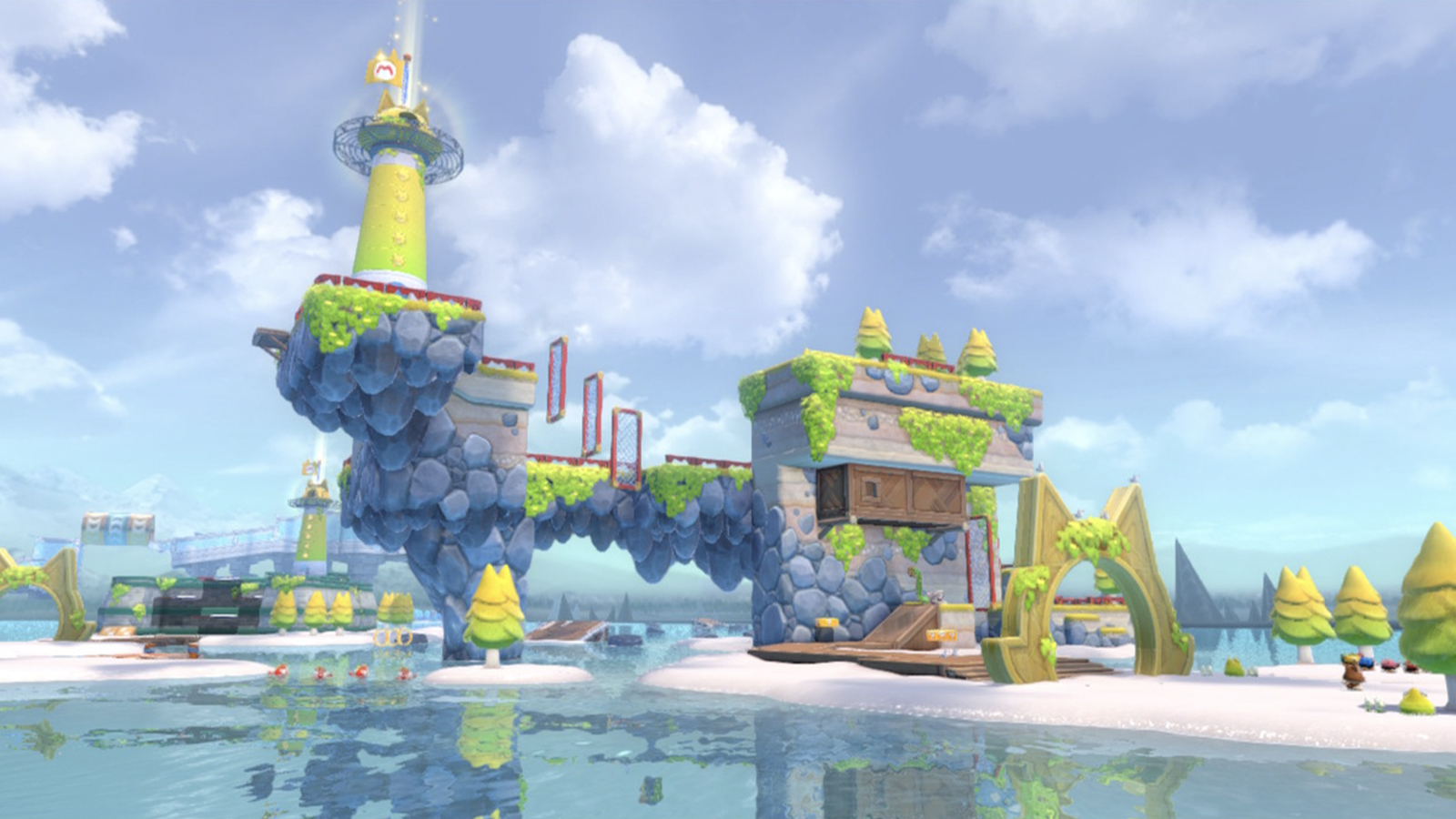
However, as the game draws to a close, grabbing a Cat Shine no longer desummons Fury Bowser, making gathering the last few Shines a mad, frenzied dash across the map as you’re dodging your archnemesis’s giant, fiery attacks.
The game’s staying power comes from a new take on what an open world Mario game could be, all the while combining parts from across the plumber’s legacy. There is the return of the tropical and mucky elements of Sunshine, the open-ended exploration perfected in Odyssey, the densely compact and rich sandboxes from Galaxy, and the multitude of feline friends, enemies, and decorations of 3D World. Bowser’s Fury shows the aesthetic richness of the Mario catalog, and it makes me beg for a game that builds upon the stories Mario has experienced, not just the mechanics that his games have accumulated.
But at the very least, I suspect we’ll see more Mario games with Bowser’s Fury’s influence soon, because, at times, Bowser’s Fury feels like a proof of concept — seemingly using the 3D World toolkit and assets to assemble its world, downgrading from the more polished and stylized appearance of Odyssey. But despite its minor lack of spitshine, Bowser’s Fury has blazed yet another new trail for Mario to take us on, and I can’t wait to see where it leads.
9
Hitman 3
So long, 47.
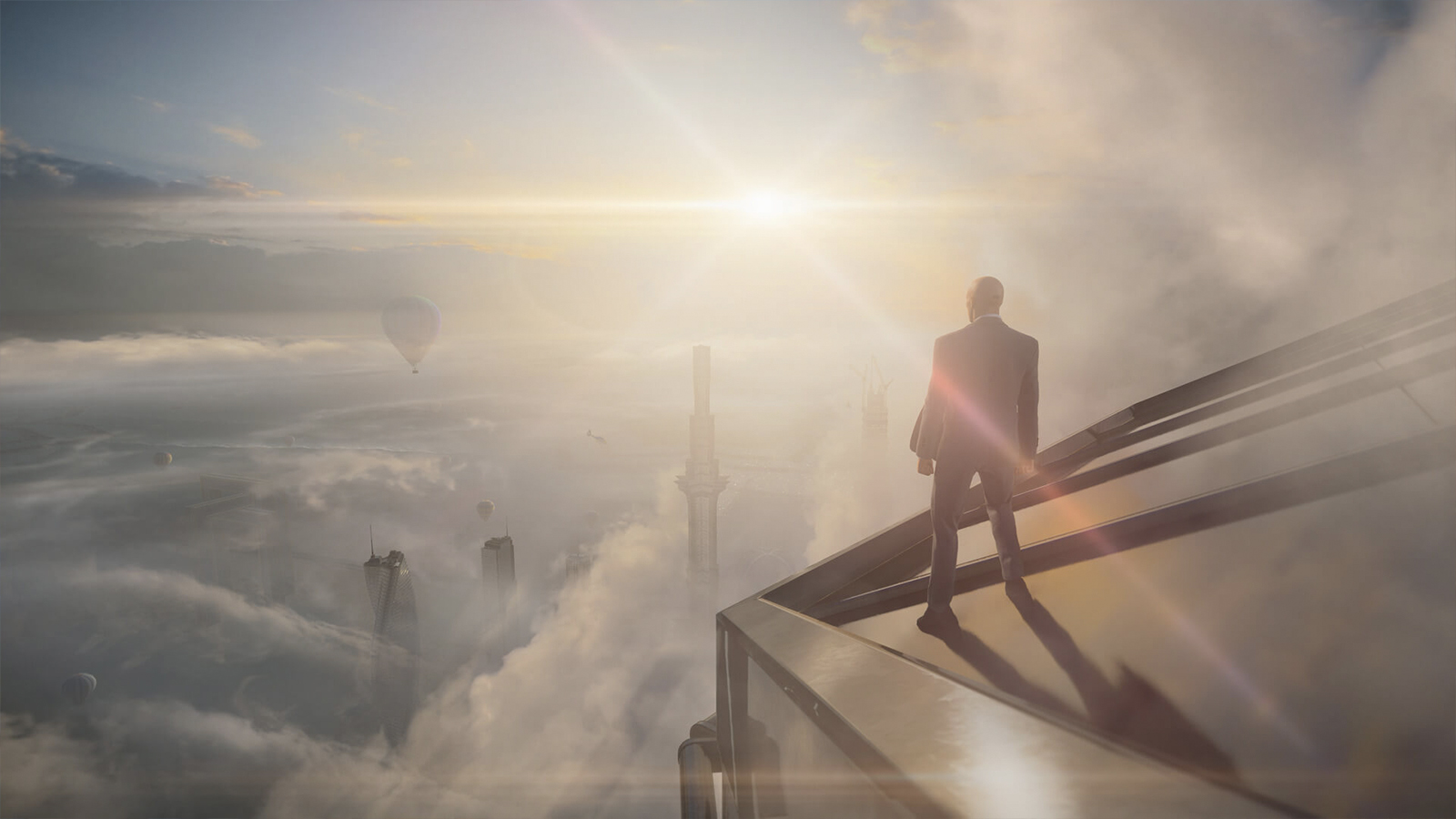
Ah, Hitman. We meet again.
It’s reductive to say it, but Hitman 3 is more Hitman. If you liked the first two, you’re going to like this one.
There are new locales, new gadgets, and new mans to hit, all supported by the solid Hitman foundation that’s been refined over three installments. Hitman 3 concludes a trilogy that began as an ambitious, episodic take on the franchise and morphed into a more traditional, albeit still amazing, game series.
The game’s main narrative still leaves much to be desired. The overarching plot of conspiracy, double-crosses, and general skullduggery ultimately left me unimpressed, but IO Interactive tries its darndest to weave what’s happening in the A plot back into the individual missions, with most of the “true” mission stories ending with an in-level interaction with one of your two handlers — Lucas Grey or Diana Burnwood. Unfortunately, most of the big plot points are still reserved for the non-interactive cutscenes that are divorced from most of the action.
What’s far more interesting are the in-mission narratives, like disguising yourself as a detective to solve a murder at an English estate, ultimately bringing you within arm’s reach of your assassination target, the family matriarch. These story arcs are what you invest most of your time and attention on, and I wish they played a more outsized influence on the overall story.
But these are minor squabbles. Hitman 3 is still Hitman at its best, and IO flexes its muscles in this third entry by breaking the mold of what Hitman can be. There’s one mission that begins at a desolate, roadside gas station in Germany that then has you stalking and killing enemy agents in the nearby woods to eventually stumbling upon an industrial nightclub rave where you have to figure out who your targets actually are before you can eliminate them.
And in the most incredible inversion of expectations, the final level is so incredibly railroaded — both literally and figuratively — that you can’t help but smile as the game asks you to recontextualize everything you’ve learned over three games as it rushes full steam ahead towards its finale.
If my enjoyment of the World of Assassination trilogy wasn’t enough, IO went ahead and announced their next game: Project 007, a new take on the James Bond franchise. And with Hitman 3 demonstrating a perfect balance of grace, finesse, and the right amount of cheese, I’d say Bond is in good hands.
8
Splitgate
Now you’re shooting with portals.
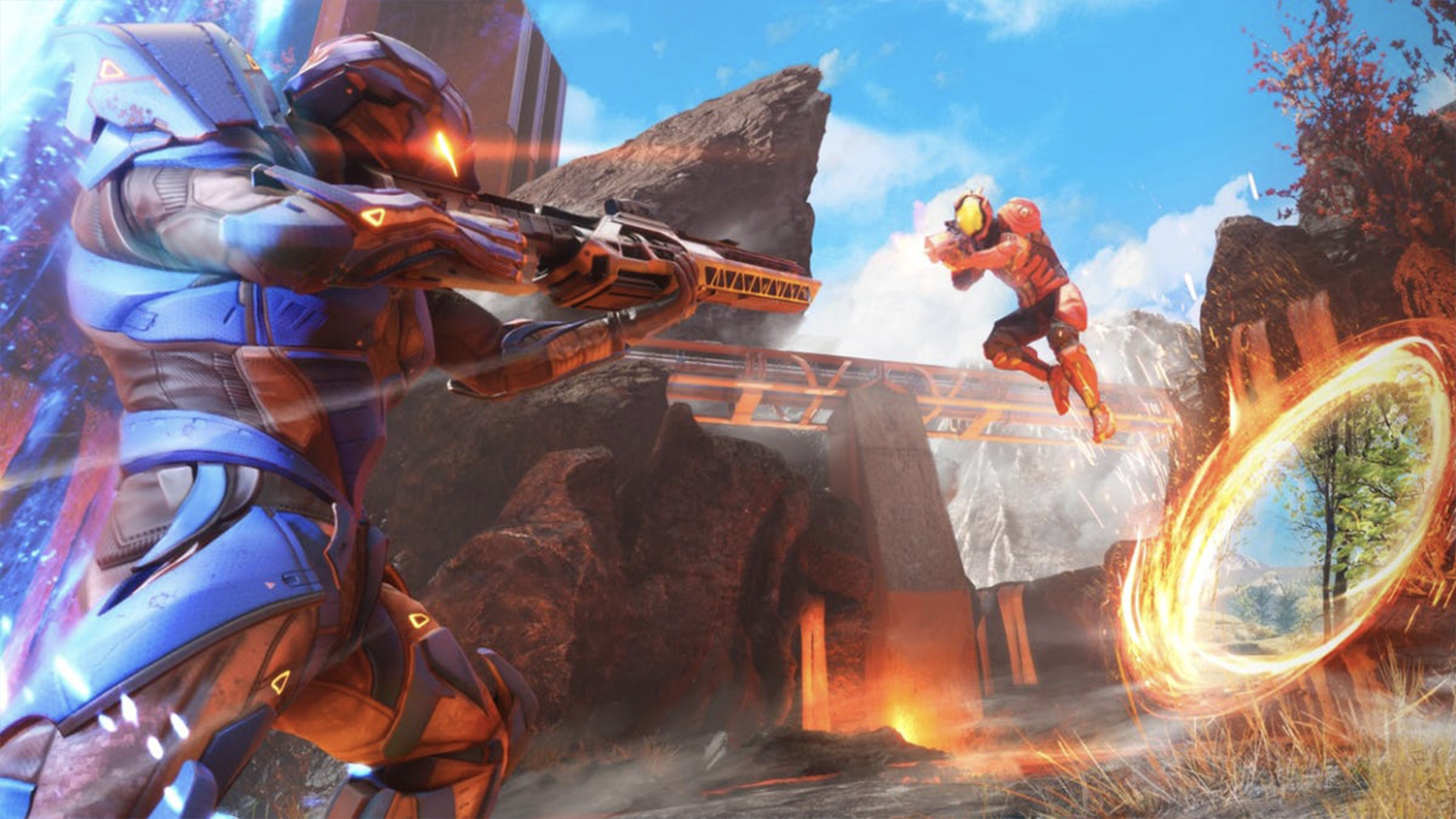
Splitgate has a fairly simple pitch: it’s Halo meets Portal.
That make sense? Yeah? Okay, cool. Writeup over.
But in all seriousness, the comparison is easy to make, and Splitgate does nothing to avoid it. The fully armored space men look and play like generic Halo Spartans, and the two halves of your portal are accented blue and orange, just like in Portal. They know what they’re doing.
But because of this added mechanic of teleportation, Splitgate allows for a more creative blend of shooting and strategy than you’d expect from a regular multiplayer shooter.
In Splitgate, levels can take greater advantage of the verticality of spaces, putting platforms and walkways on high perches that aren’t accessible by foot, forcing you to — forgive me — think with portals. However, this does mean you have to constantly keep your head on a three dimensional swivel, as attacks can frequently come from above or below as much as they do from in front or behind. Or, sometimes, even from the other end of a portal.
And that adds a beautiful wrinkle to this game: while players can plop down their portal on any wall that allows it — another paradigm borrowed from Portal — you can’t see through portals made by other people, even allies, so going through one is always a risk, cause you don’t know what’s waiting for you on the other side.
But it’s so satisfying to blind fire into a portal and get a kill, and it’s even more satisfying to look through your own portal and pick off enemies, turning it into a portable loophole. An early strategy of mine was to set up an impromptu sniper’s nest via portals, placing one side high up on a wall while squirreling myself and the other portal in some hidden corner of a map. This gave me a handy bird’s eye view of the battle, but it also made me a potential target: people could sneak up and assassinate me while I was sniping or could blind fire into my portal to kill me, giving this strategy a delectable balance of risk versus reward.
But at the end of the day, you go where your friends are, which can become quite frantic in an era of free to play games, where people switch between multiplayer games with reckless abandon. So, eventually, my friend group drifted away from Splitgate and onto other multiplayer games. But the enjoyment you had with a game is not always measured by hours played. Sometimes, it’s measured by the laughs you had with friends while playing it, and Splitgate succeeds at that. What more could you ask for?
7
Knockout City
Where the streets are mean and the balls are hitty.
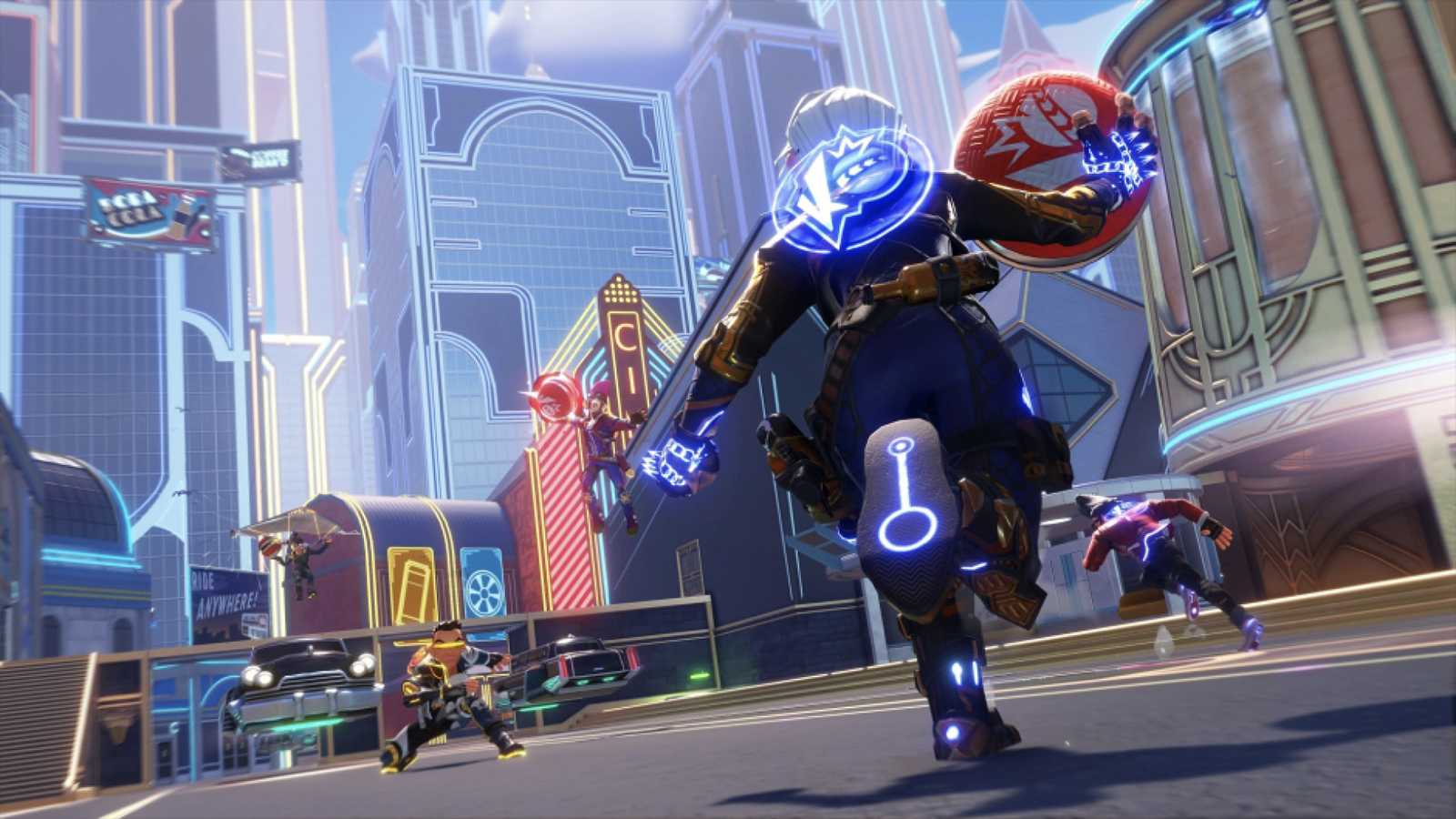
I’ve always wanted to get into a non-traditional competitive multiplayer game — one that wasn’t just based around shootin’ guns. There have been games of this nature that have intrigued me in the past: Chivalry, Bleeding Edge, For Honor. But for one reason or another, I was never able to sink my teeth into any of them. Even though I really wanted to!
So when Knockout City came around, I took this as an opportunity to get into a PvP game not based around shooting. Well, ok, I guess you’re technically shooting dodgeballs.
But Knockout City’s dodgeball gameplay and cartoony graphics belie the depth of mechanics at play. Players face off in teams of three on maps trading in a ‘50s retrofuturistic style, with hover cars that look like Chevy Bel Airs and greaser jackets with neon trim. Using balls placed around each map, players can run, jump, strike, and dodge their way to victory. You can simply throw your ball at another player to knock off one of the two pips of health they have, or you can charge it up for faster and more devastating attacks, killing them instantly. If timed right, you can also catch balls thrown at you and do a quick return to sender. There are also different kinds of throws — an overhand dunk or a curveball — that you can use to fake out an opponent prepared for a catch.
But the mechanics keep growing: fake throws, passes to teammates, and other abilities round out an already sizable toolkit. You and your allies can even turn yourselves into balls, allowing you to weaponize one another against your opponents. In a year where many of my favorite games were multiplayer-focused, Knockout City stands out as a game that’s fiercely competitive while breaking the mold of what a player versus player game can be.
6
Deathloop
Close your loop.
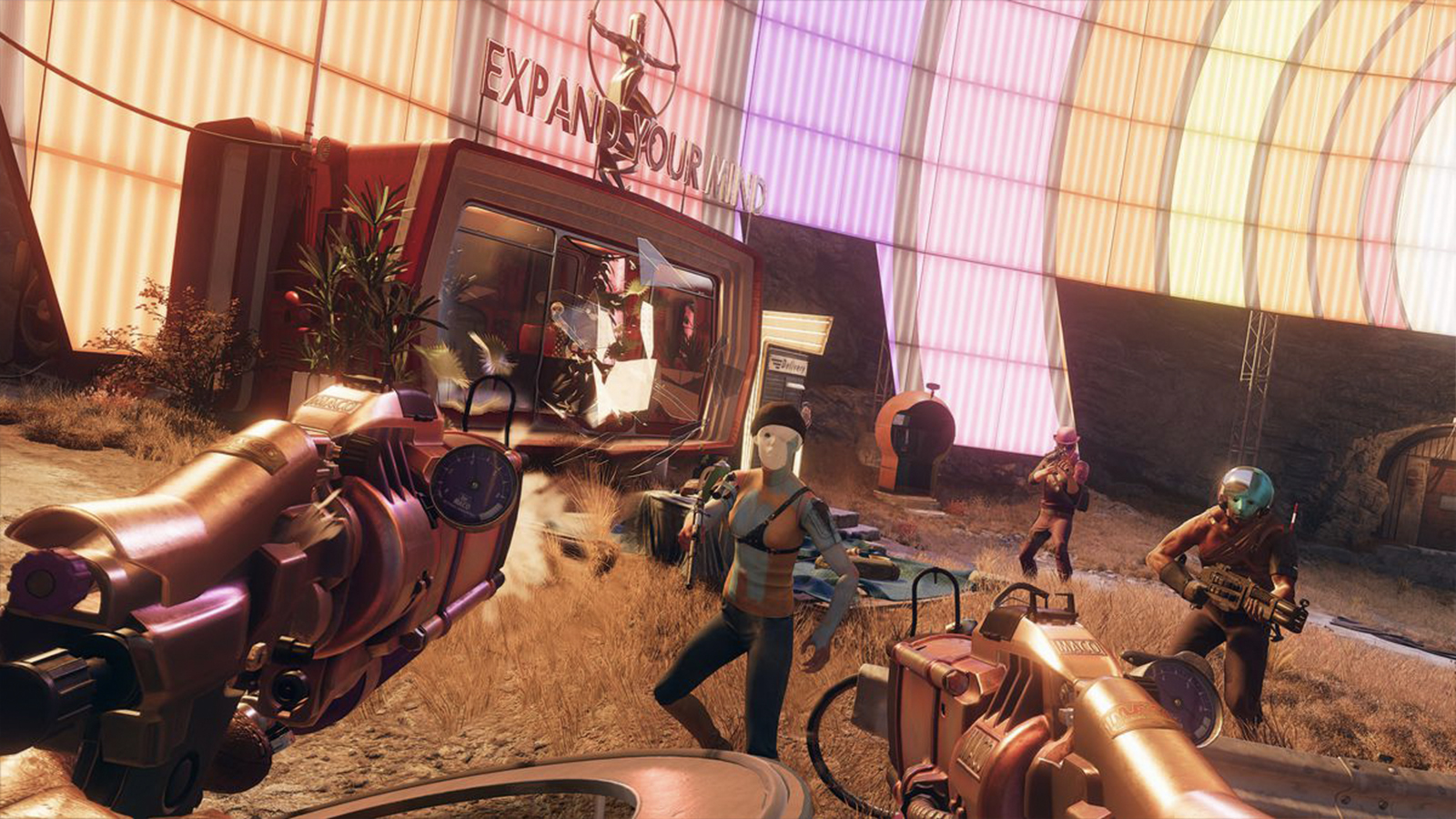
Finally, Arkane made a good video game.
I kid, but only slightly. Arkane games have never clicked with me in the past — the moments of brilliance are often obscured by their unforgiving difficulty, so I tend to drift away from them long before they conclude.
Maybe I’m not a huge immersive sim person, or maybe I only like a certain kind of immersive sim, which would make sense if you indulge a little theory I have: because I maintain that every Arkane game is simply an analog to an entry in the immersive sim pantheon. Dishonored is Arkane’s Thief, Prey is their System Shock (and also their Prey), and Deathloop? Well, Deathloop is clearly their BioShock, which, coincidentally, is the only immersive sim I like.
The similarities are all there: slabs instead of plasmids, Eternalists instead of Splicers. There’s the ongoing dialog over the radio with your rival. I guess there’s no Big Daddy equivalent. Well, except for Colt. He’s my big daddy.
I would also say that there are plenty of similarities shared between the Visionaries — the main bosses of Deathloop — and the bosses in BioShock. They’re your end goal, as well as the characters these two games want you to care the most about, yet you’re always holding them at arm’s length. In BioShock, this unfortunately makes the named baddies fall kind of flat — Sander Cohen, Dr. Steinman, Peach Wilkins, and others don’t get enough facetime with the player to come off as meaningful, and Deathloop’s Frank Spicer, Wenjie Evans, Charlie Montague, et al. can suffer from a similar lack of interpersonal characterization.
Deathloop partially resolves this problem with its time loop conceit, allowing you repeated run-ins with the Visionaries, instead of just one-off encounters like in BioShock, making you feel a little more connected to them, further reinforced with the classic immersive sim inclusion of audio diaries everywhere.
So, ultimately, this is what you have with Dealthloop: an immersive sim where you’re tasked with killing several high profile targets through the course of a single day. Fail to eliminate a Visionary or die while attempting to do so? Then you have to start over from the beginning.
It’s a BioShock-Hitman roguelike, which seems like a winning combination on paper and is just as successful in practice. Arkane has learned to adopt the best elements from each of these influences to make something wholly unique. You have the immersive sim ability to tackle objectives through a choice of stealth, action, or a fusion of both, all while using your paranormal slab abilities and device hacking to enhance your playstyle. There are Hitman-style mission stories that tell you where you need to be to take out a given Visionary, but it’s up to you to figure out how to get there. And this is all fused with the genre-defining stress of roguelikes, where you hold your breath and try not mess up during an intense firefight or important stealth sequence, because doing so would set you back, usually in the form of losing an ability or weapon that you haven’t yet infused with Residuum, the ingame currency that makes gear persist between runs.
It’s an exciting blend of genres and gameplay, all made worthwhile by the mysteries of Colt, Julianna, the island of Blackreef, and my desire to unravel it all.
5
holedown
Way down in the hole.
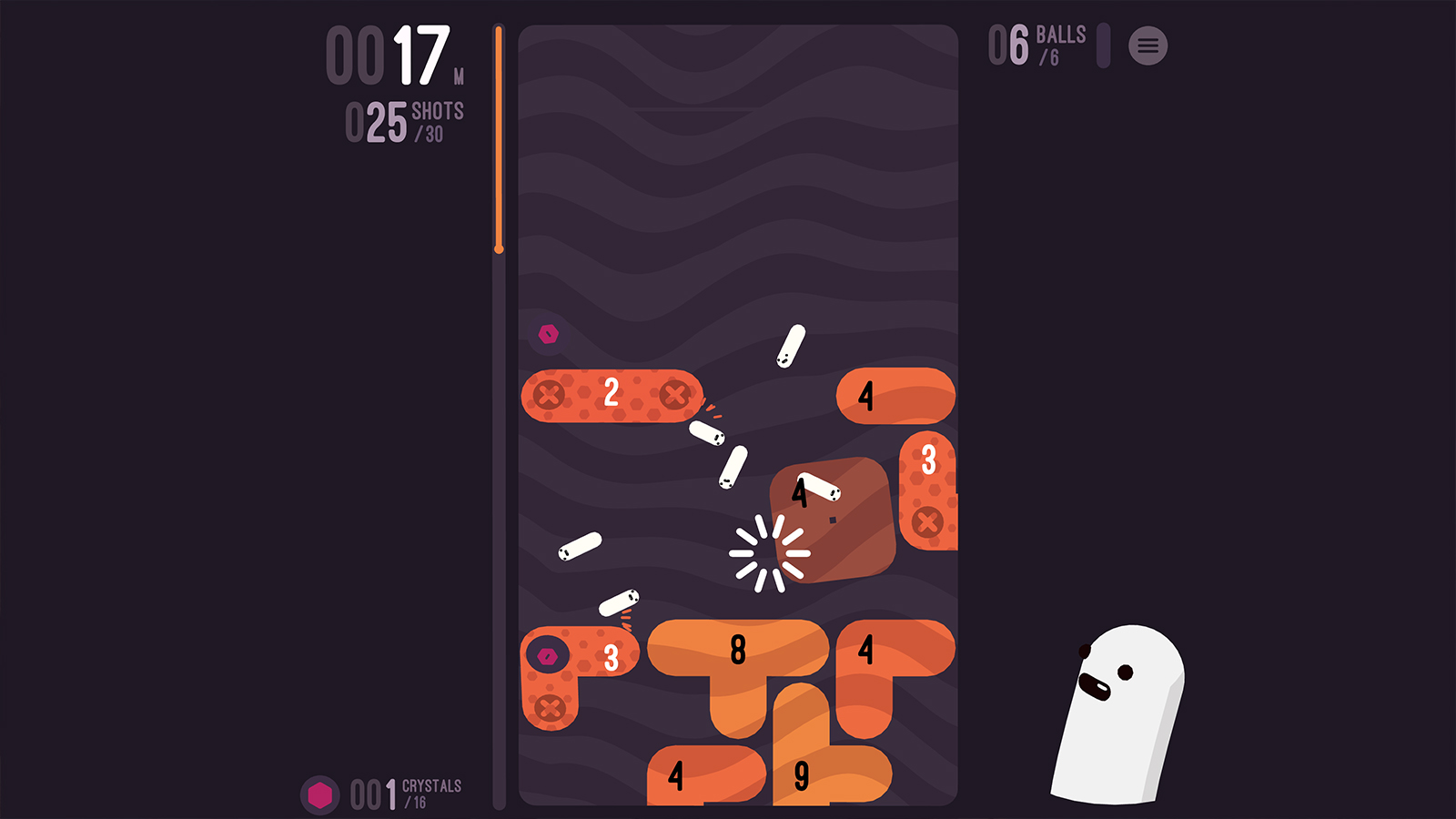
I’m always on the hunt for the perfect phone game — something that gets you in and out of the zone quickly so you can take a mini vacation when you’re on the bus, waiting in a doctor’s office, or tending to, uh… certain biological functions.
For the past year or two, this need has been met with holedown.
The best way I can describe holedown is “endless runner Breakout” — you have a series of balls that hang out at the top of the screen in a kind of corral, the border of which is designated by a white line. You shoot these balls at bricks of odd shapes — some are square, some are rectangular, some are L-shaped, but each has a number which corresponds to the amount of times you have to hit it to destroy it. Whenever a ball returns to the corral — either by going back across the starting line or by running out of momentum by bouncing around the playfield one too many times — that ball is eliminated from play for the current round. When all of the balls return to the corral, the current turn ends and all of the destructible bricks move up one row. If the bricks cross into the ball corral, then your run ends, and you have to start over.
So the goal is to always shoot your balls in such a way as to get as many bounces as possible in a single turn. There’s just one problem: this is incredibly difficult to predict. holedown only ever shows you the vector that your balls will first movie in after you throw them. It’s your job to try to predict how they’ll bounce around after that point, which you only get a feel for after many, many runs.
holedown creates incredible emotional swings, from getting a clutch, run-saving angle at the last possible second to the devastation of getting so close to beating your high score and flubbing it at the finish line. It’s pretty much the only mobile game I play now, which makes me wonder… why do I still have this Apple Arcade subscription?
4
Halo Infinite
Hail to the Chief.
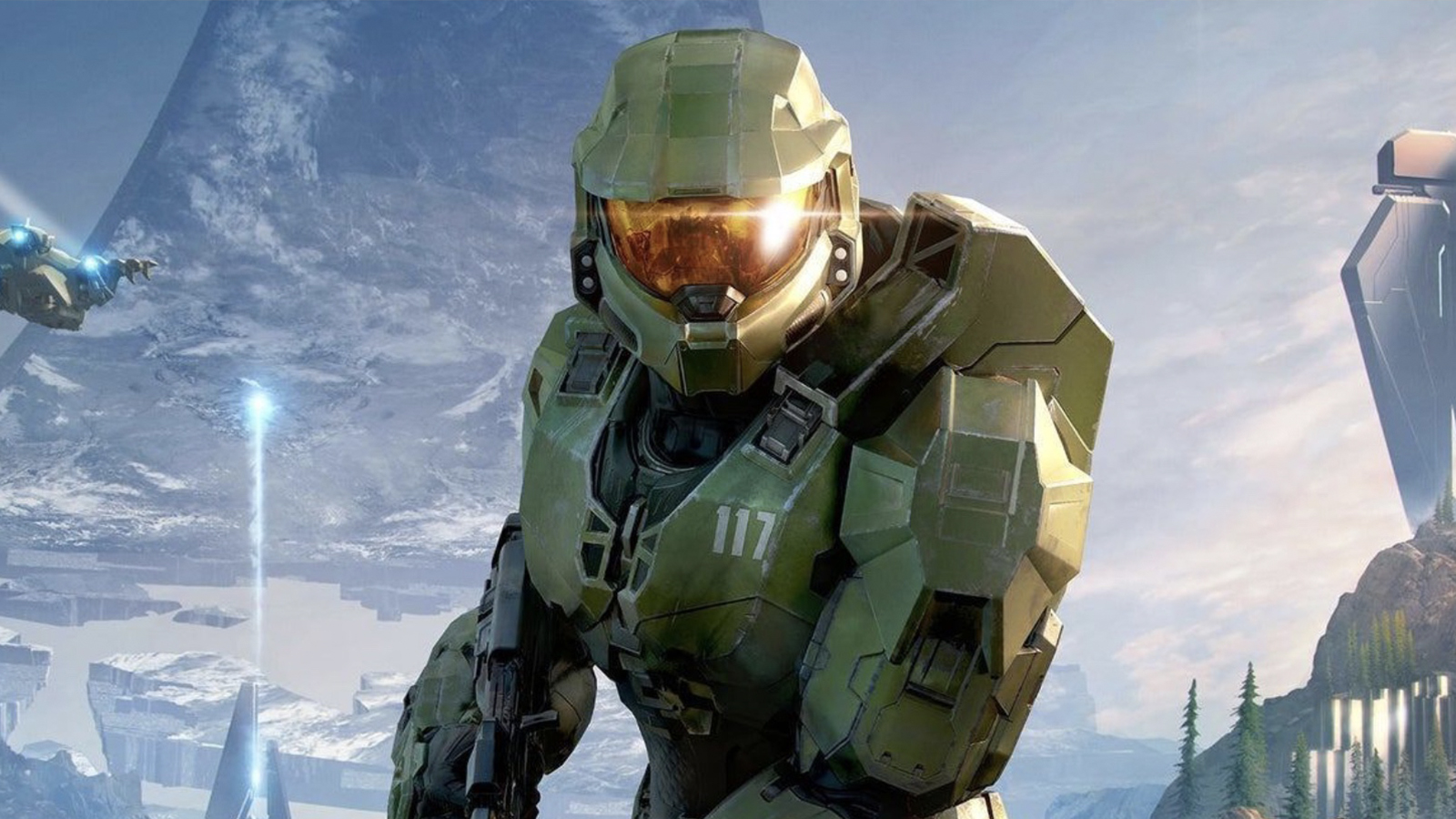
343 Industries has had a rough go of it with the Halo franchise so far. Studio founder and general manager Bonnie Ross has talked about how she thinks past Halo games have missed the mark under 343’s stewardship: with Halo 4, she felt they nailed the story, but distanced themselves from the core of Halo’s multiplayer. With Halo 5: Guardians, she believed their PvP was a proper return to form, but the campaign drifted too far away from the tales of the Master Chief. There were also the terrible connectivity issues in the Master Chief Collection that plagued its online features years after launch, causing even more damage to 343’s reputation.
But I don’t begrudge the studio these growing pains. 343 has been in the unenviable position of continuing one of the most beloved franchises in modern gaming, while also attempting to put their own stamp on it. With Halo Infinite, they’ve come the closest they ever had to finding that balance, and nowhere is this more evident than their portrayal of Master Chief.
I’m enamored with Master Chief as a character study. He is the modern poster child for faceless space marine, silently stomping across the cosmos and kicking ass. For much of Chief’s existence, he’s been nothing more than “cool action guy doing cool action things while saying cool actiony one-liners,” combined with a healthy dose of military agitprop.
But 343 has taken everything we’ve known about Master Chief — his expressionlessness, his monotony, his Spartan invincibility, his immovable sense of duty — and has recontextualized these as character flaws as opposed to character strengths. There’s a scene from Halo 4 that I always think about, where Cortana stares out of a window aboard the UNSC Infinity, talking about wanting to know what the sun would feel like on her skin. Meanwhile, Chief is in the background, prepping his gear and weapons to be mission ready. “Before this is all over, promise me you’ll figure out which one of us is the machine,” Cortana retorts.
This dichotomy of Chief the man versus Chief the machine is woven from 4 all the way to Infinite. When talking to the other characters in the latest installment, his monotone actually gets in the way of him being able to express himself, and there’s a strain in his voice whenever he tries to adjust his tone. Despite saving the galaxy from annihilation multiple times, the hardest thing for him to do is to convey emotion.
Oh, and before I forget to mention it: yes, the gameplay is good.
Whether it’s trekking across the open world in Infinite’s campaign or playing match after match in the expertly made multiplayer, Halo feels better than it has in a long, long time.
But it’s the ever-changing character of the Master Chief — a masked man who’s been the de facto mascot of Xbox going on two decades — that keeps me curious. After all the flags are captured, after all of the aliens are beat, what does the evolution of one of the most recognizable icons in video games — from cool ass-kicker to introspective hero — say about us? Maybe we’re all trying to find the man under the machine.
3
New Pokémon Snap
It’s a snap!
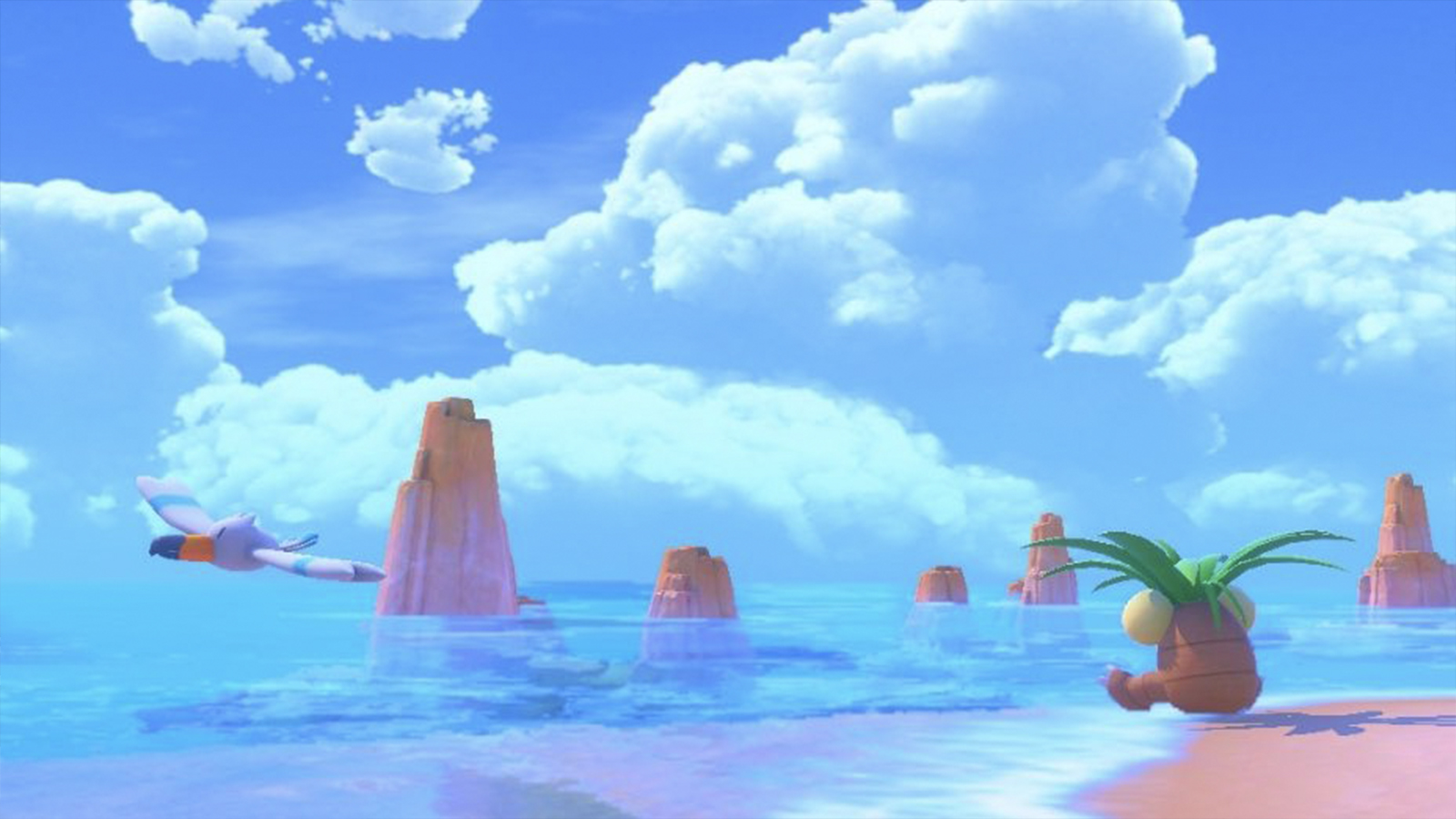
Pokémon as a franchise is so versatile — there are strategy games, fighting games, a café simulator, an app that helps you sleep better, and one that helps you brush your teeth — it’s no wonder that it’s one of the largest media properties in the world.
But before we had things like a location-based, alternate reality Pokémon app, the world of Pokémon spin-offs had its humble beginnings on the Nintendo 64. There was Pokemon Stadium — a fully 3D interpretation of what Pokémon battles could look like — and Hey You, Pikachu! — a voice activated game where you hung out with everyone’s favorite lightning mouse — and, of course, there was Pokémon Snap.
The idea of Snap was genius: what if we saw Pokémon in their natural habitat and took pictures of them? This did so much to capture the imagination of the little pocket monsters we mostly knew as sprites on our Game Boys and cartoons on our televisions. Now we could see and interact with Haunters floating through caves, Magikarp swimming up streams, and Pikachu playing on the beach. It was the perfect combination of whimsy and originality that befitted the world of Pokémon.
So it’s a wonder that it took over twenty years for this series to return, but return it has, and New Pokémon Snap is bigger, better, and longer than ever.
Y’see, in the N64 Snap, you could easily unlock each successive course on your first pass through the previous one, allowing you to get to the end of the game in only an hour or so. New Pokêmon Snap, however, takes its time doling out new areas, forcing you to stop and smell the Pokéroses with multiple walks through each level. While new tracks are dispensed at a slower pace, new Snap provides more variety on any given course — with different times of day, alternate paths, and earnable “Research Levels” for each track. All of these are unlocked from taking better and better photos, as opposed to meeting arbitrary objectives like in the original game.
So while you will be replaying tracks a whole lot more before you get to see new ones, let’s be honest: you were doing this in the original Pokémon Snap anyways. No one ever really played each level just once. New Pokémon Snap just makes this progression more explicit, and I think it helps reinforce the game’s mantra: it’s not a race to the finish, it’s all about observing the beauty of Pokénature — watching, waiting, and trying to get the perfect snap.
2
Adios
So long, partner.
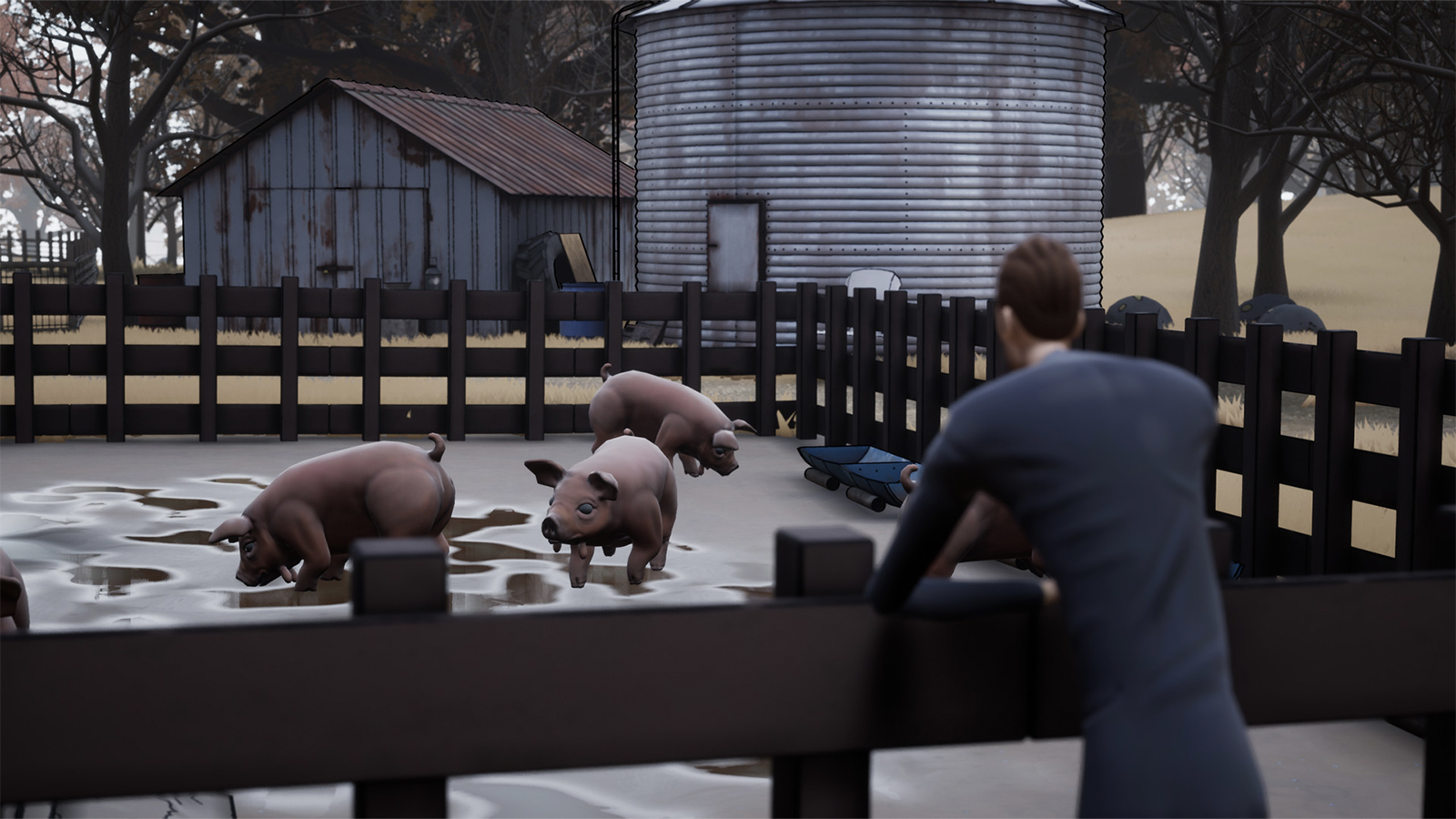
Nothing can quite beat the beauty of a well-told story.
And Adios is one such story. It’s the tale of a down-on-his-luck farmer that’s struggling with his past choices. He’s made a deal with some bad folks, y’see, and while they’ve paid him handsomely in exchange for his pigs’ ongoing help getting rid of an endless line of bodies, it’s at the cost of his family and his happiness.
So what can a person do in this situation? Run away? Fight back? Go to the police? No, the farmer knows there’s only one thing that can put his mind at peace: refuse to do the job anymore. There’s just one problem — in this business, the only way you can leave is when they put you in the ground.
So that’s where we find ourselves at the beginning of this game: with two opposing forces colliding. One a farmer who refuses to go along with this dirty work anymore, and the other an associate of the business trying to convince him that he’s making a mistake, and that if someone is tasked with pulling the trigger, it will probably be him.
So the associate decides to spend the day on the farm — milking goats, shoveling manure, helping with other odd jobs — all while trying to convince the farmer to change his mind. The farmer, however, is more interested in reflecting on his life with his soon-to-be killer, thinking about where it went right and where it went wrong. He took up this line of work because he needed the money, but was it worth driving away his family? These are the questions that Adios grapples with, and while the conclusion may feel preordained for the player, it was never their choice to make, it was the farmer’s. After all, few of us get to decide how our stories are told, but he got to decide how his ended.
1
Paper Mario: The Origami King
An enjoyable experience with no creases.
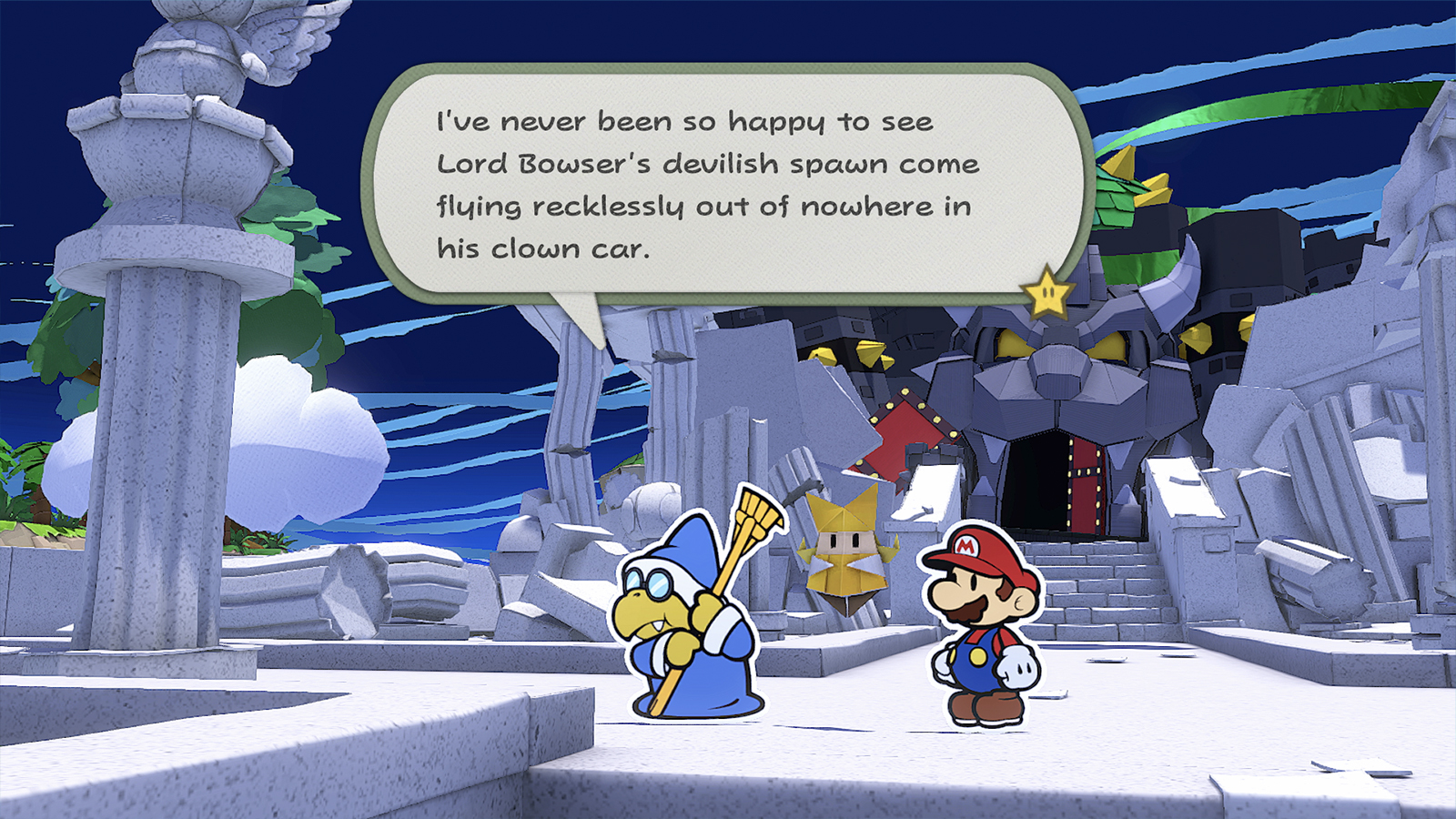
You may not know this about me, but I love role-playing games. I love enveloping myself in a game’s world and experiencing the people, places, and stories that have been created.
There’s just one problem with most RPGs: they’re just so long, and they don’t really fit in my current lifestyle, where sticking with a game over scores of hours can be a big commitment.
This is why I’m happy to announce that Paper Mario: The Origami King is an RPG that doesn’t overstay its welcome.
If you’re not familiar with Mario, here’s the quick version: Bowser, Princess Peach, kidnapping, save the day, hooray! If you’re not familiar with Paper Mario, here’s an addendum: upended expectations, turn-based combat, papercraft world, and amazingly written dialog.
And the dialog in Origami King is just so good. There are so many clever, little morsels of writing that keep you entertained the whole way through the game. One of my favorite little running gags was when Olivia, the proverbial origami princess, constantly calls your team’s Bob-omb different names — “Bobby,” “Bhomas,” “Bombert” — possibly a nod to the fact that classic Mario enemies in past Paper Mario titles used to have unique names — a practice Nintendo has since banned, apparently. But all of the great writing, combined with the game’s total play time clocking in under 30 hours, made this one of the breeziest RPGs I’ve played in a long, long time.
I’ve seen plenty of folks criticize the combat, which plays out on a big puzzle wheel that you spin and slide to line enemies up to do as much damage with as few boot stomps and hammer swings as possible. I’m not a Paper Mario purist — heck, this is the first one I’ve ever played! — so I have no qualms with the combat. In fact, I respect the team’s creative decision to create “Paper Mario games that are both innovative and unique” with each new entry, never returning to the well that is traditional turn-based combat.
And here, like in most of my favorite RPGs, the combat is really just icing on the cake for me. I’m here for good writing, a fun story, and an engaging world — if you have all that, what more could you ask for?
